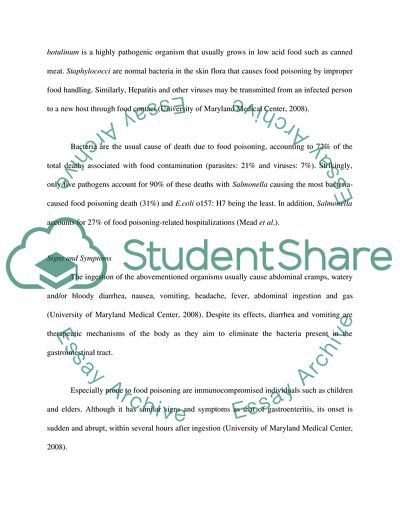Cite this document
(Food Poisoning Essay Example | Topics and Well Written Essays - 1500 words, n.d.)
Food Poisoning Essay Example | Topics and Well Written Essays - 1500 words. Retrieved from https://studentshare.org/health-sciences-medicine/1755211-food-safety-and-food-poisoning-outbreaks
Food Poisoning Essay Example | Topics and Well Written Essays - 1500 words. Retrieved from https://studentshare.org/health-sciences-medicine/1755211-food-safety-and-food-poisoning-outbreaks
(Food Poisoning Essay Example | Topics and Well Written Essays - 1500 Words)
Food Poisoning Essay Example | Topics and Well Written Essays - 1500 Words. https://studentshare.org/health-sciences-medicine/1755211-food-safety-and-food-poisoning-outbreaks.
Food Poisoning Essay Example | Topics and Well Written Essays - 1500 Words. https://studentshare.org/health-sciences-medicine/1755211-food-safety-and-food-poisoning-outbreaks.
“Food Poisoning Essay Example | Topics and Well Written Essays - 1500 Words”. https://studentshare.org/health-sciences-medicine/1755211-food-safety-and-food-poisoning-outbreaks.


